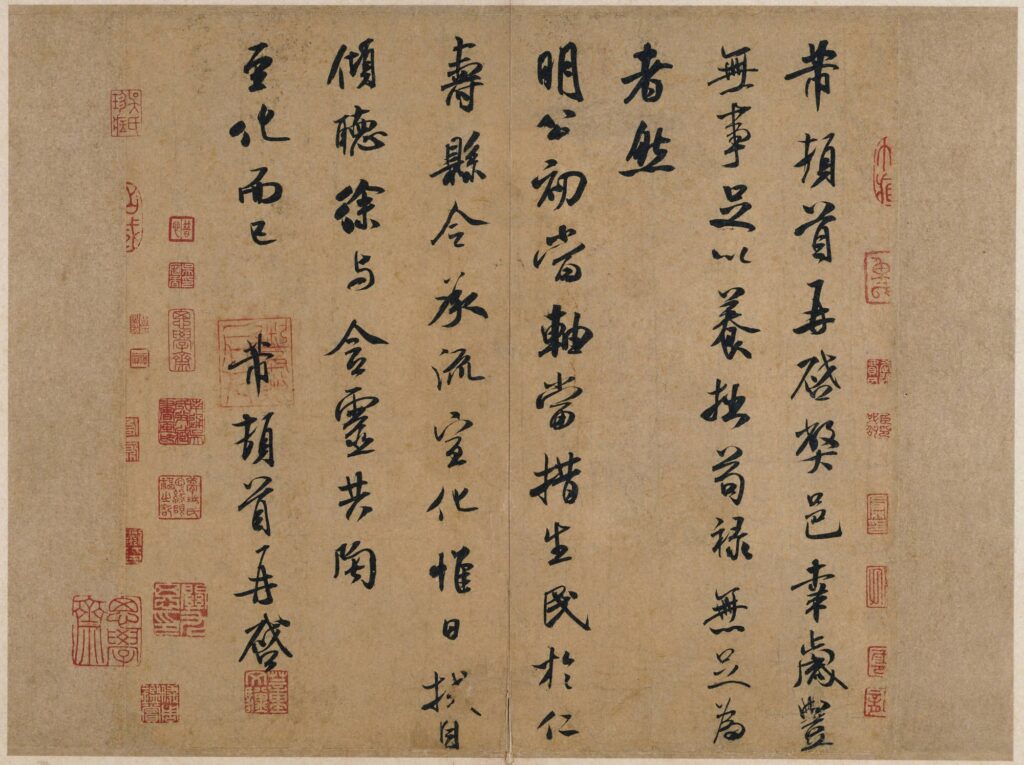This week we learned about Chinese collectors which was a very interesting topic. There were many similar themes found in this week that we have seen throughout the entire semester. On Tuesday, we talked about calligraphy and how it was valued in the public eye. In class we were split into groups and looked at photos of calligraphy, porcelain, or bronzes. My group analyzed examples of calligraphy found at the Princeton University Art Museum. We noticed on these calligraphy works there were many seals placed on this art by emperors or other owners of this work with their own personal seals. This started the discussion of what defines the value of calligraphy itself. In my opinion, the seals were valued more than the calligraphy because it seems that this art became a battle of ownership defined by seals, instead of being proud of owning the calligraphy itself. As well, the placement of the seals on the calligraphy ruins the beauty and elegance of the calligraphy and work it took to create. The seals become more of a priority and reason for ownership, especially if previously owned by an emperor because people can have the right to say they own an item previously used by an emperor.

This idea of ownership and a strong ego was also discussed in Thursday’s class about catalogs and artworks. Catalogs were made in order to organize the many artworks that emperors owned. To this day, catalogs are a very important resource in providing data and a way to organize artworks or articles to be easily found when needed. Especially today when looking back at historical resources, catalogs are a very useful way to find materials or artworks and find out what they were made of, where they came from, what year they were created, etc. Many emperors supported art by owning many artworks and placing them in their palace (after they put their seal on it of course). However, they focused less on the artists and more on the ownership of the artwork itself. Emperors wanted their artwork so that they could have a legacy to leave behind, aside from having an excuse for bragging rights or proving how they could be better than others based on their collection. People would also donate art to the emperor to be in his good graces and once again, boost their egos by saying they had a piece of artwork in the emperor’s palace. This art was used as a way to show the power of the emperor because the larger the variety of artwork, the better the emperor you were because your people had the time to make that art. It saddens me to hear that people used art as a way to benefit themselves instead of looking at the beautiful works of art and appreciating the time it took the creators to make such masterpieces.
Clunas, Craig. Superfluous Things: Material Culture and Social Status in Early Modern China. Honolulu: Univ Of Hawai’i Press, 2016.
Ebrey, Patricia Buckley. Emperor Huizong. Cambridge, Mass.: Harvard Univ. Press 2014.
Arranz, Adolfo. “How China’s Forbidden City Became the Palace Museum.” South China Morning Post. December 05, 2018.